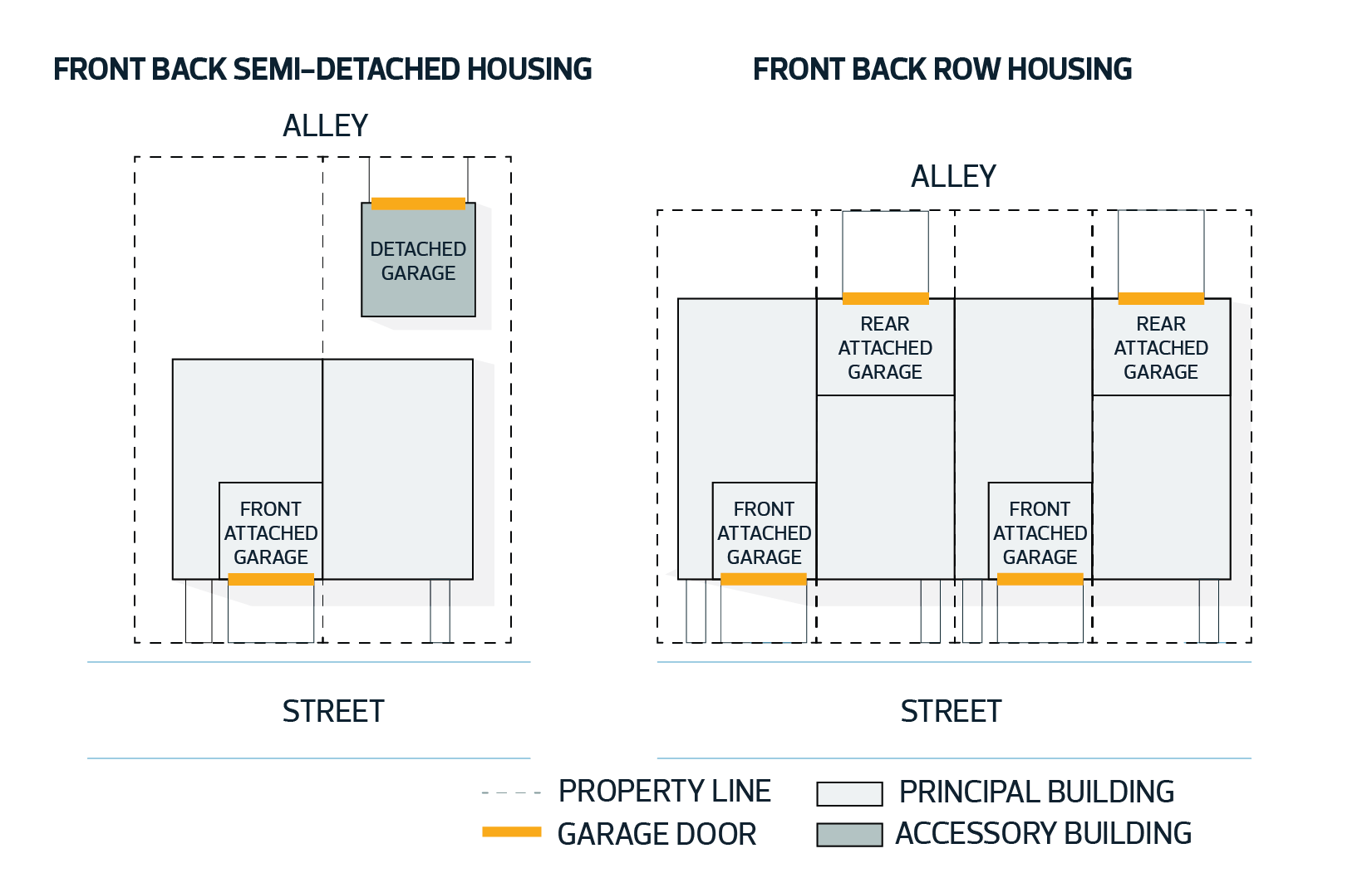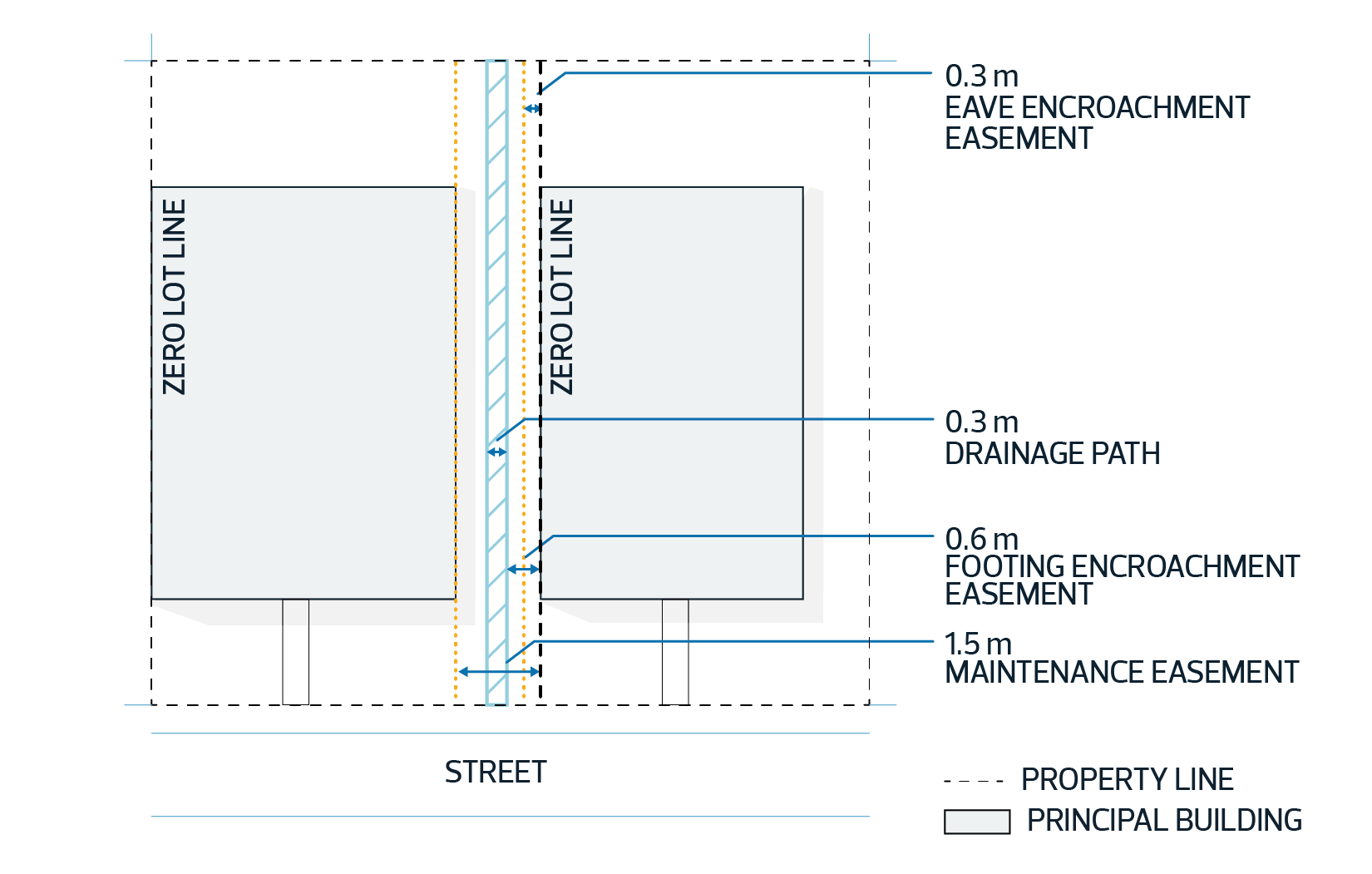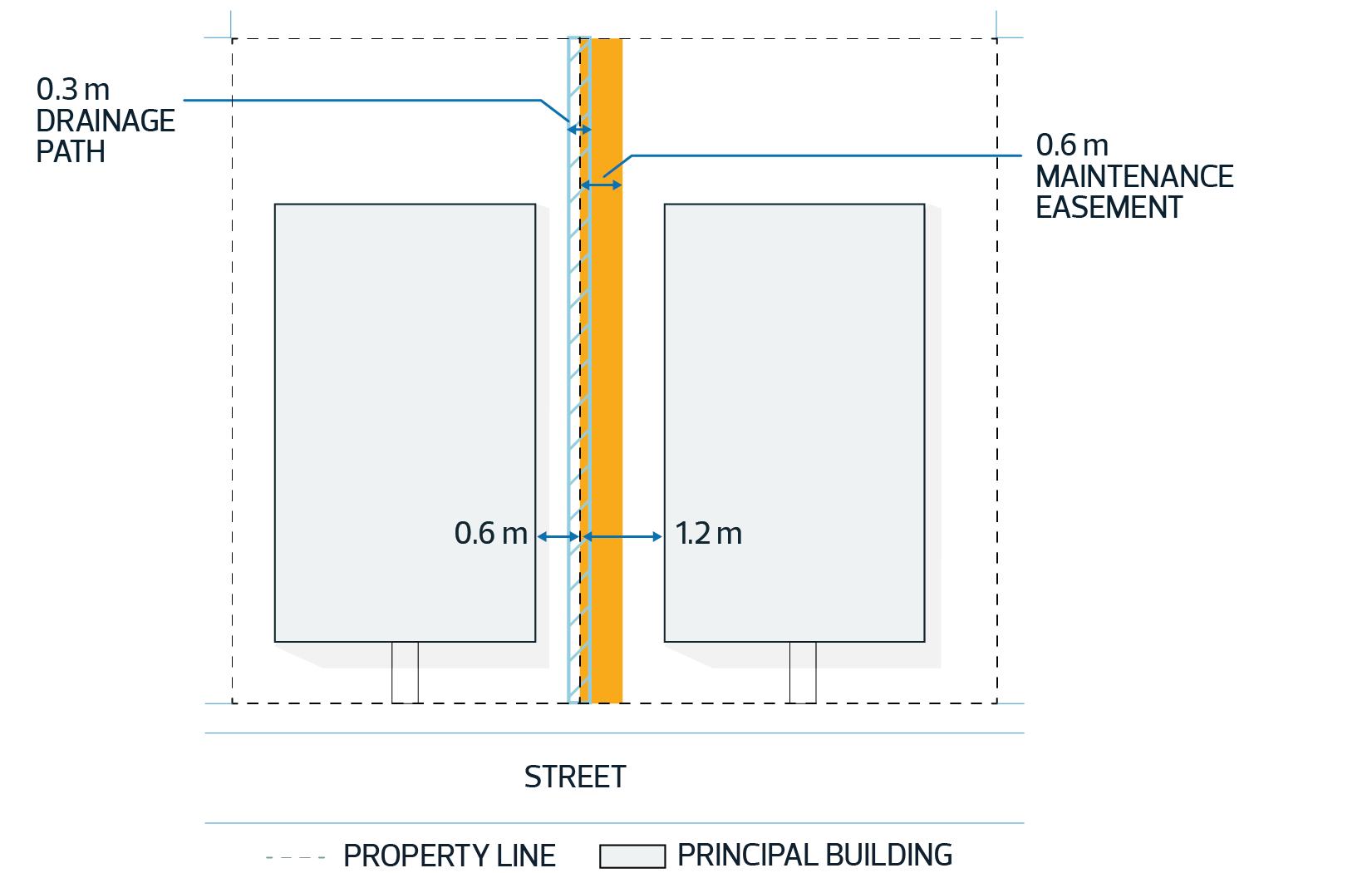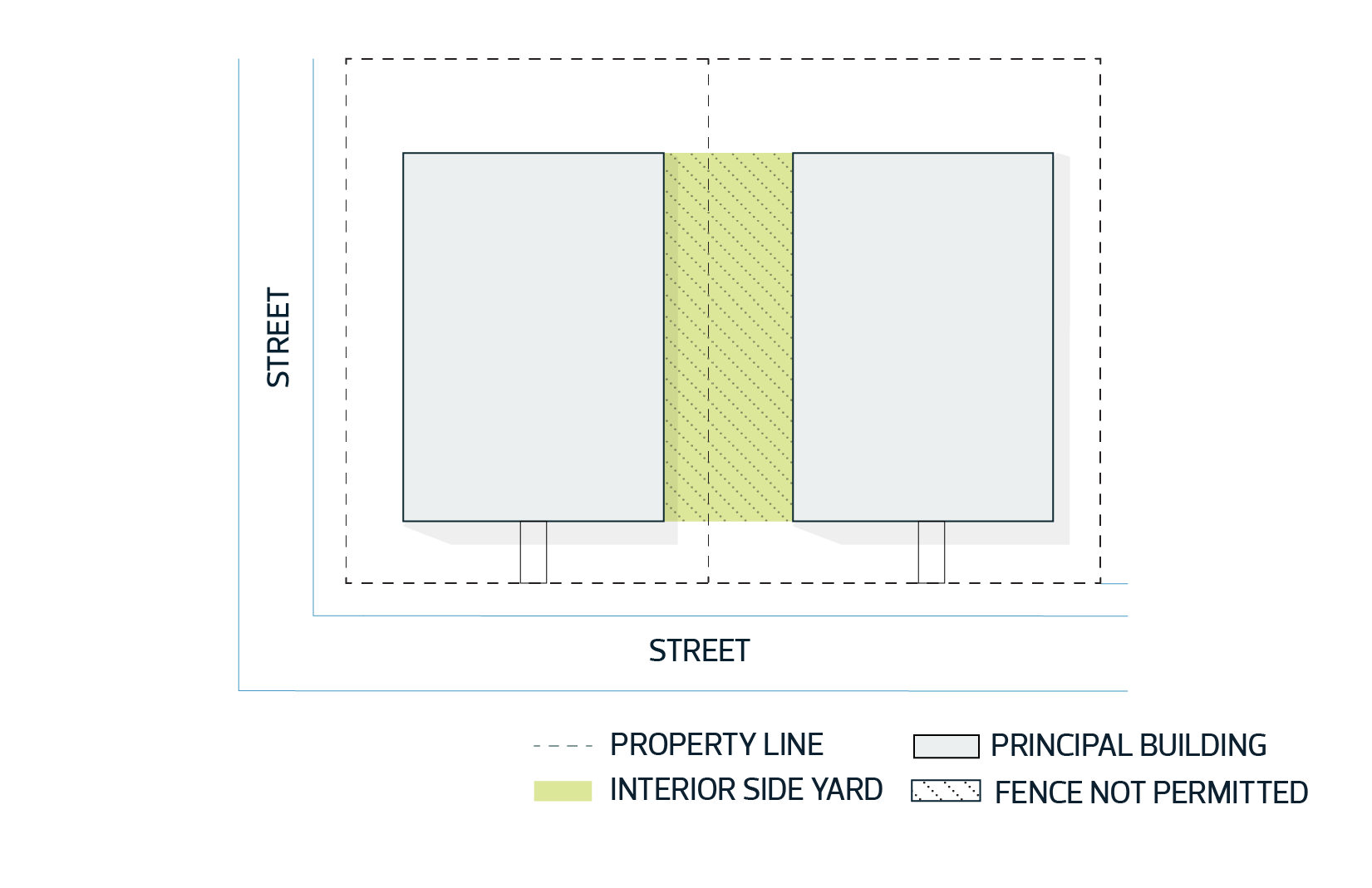To allow for a range of small scale Residential development up to 3 Storeys in Height, including detached, attached, and multi-unit Residential housing. This Zone has site and building regulations that provide additional development flexibility in appropriate contexts, such as new neighbourhoods and large undeveloped areas. Limited opportunities for community and commercial development are permitted to provide services to local residents.
Residential Uses |
|
| 2.1. | Home Based Business # |
| 2.2. | Residential |
Commercial Uses |
|
| 2.3. | Food and Drink Service |
| 2.4. | Health Service |
| 2.5. | Indoor Sales and Service |
| 2.6. | Office |
| 2.7. | Residential Sales Centre |
Community Uses |
|
| 2.8. | Child Care Service |
| 2.9. | Community Service |
| 2.10. | Special Event |
Agricultural Uses |
|
| 2.11. | Urban Agriculture |
Sign Uses |
|
| 2.12. | Fascia Sign |
| 2.13. | Freestanding Sign |
| 2.14. | Portable Sign |
Residential Uses |
|||||||||||||||||||||||
| 3.1. | Home Based Businesses must comply with Section 6.60. | ||||||||||||||||||||||
| 3.2. | Residential | ||||||||||||||||||||||
|
|||||||||||||||||||||||
Commercial Uses |
|||||||||||||||||||||||
| 3.3. | Food and Drink Services, Health Services, Indoor Sales and Services, and Offices | ||||||||||||||||||||||
|
|||||||||||||||||||||||
| 3.4. | Residential Sales Centres may be approved for a maximum of 5 years. Subsequent Development Permits for Residential Sales Centres on the same Site must only be issued as a Discretionary Development. | ||||||||||||||||||||||
Community Uses |
|||||||||||||||||||||||
| 3.5. | Community Services and Child Care Services | ||||||||||||||||||||||
|
|||||||||||||||||||||||
| 3.6. | Special Events must comply with Section 6.100. | ||||||||||||||||||||||
Agricultural Uses |
|||||||||||||||||||||||
| 3.7. | Urban Agriculture must not be the only Use in a principal building. | ||||||||||||||||||||||
Sign Uses |
|||||||||||||||||||||||
| 3.8. | Signs are limited to On-premises Advertising. | ||||||||||||||||||||||
| 3.9. | Signs must comply with Section 6.90. | ||||||||||||||||||||||
| 4.1. | Development must comply with Table 4.1: |
| Table 4.1. Site and Building Regulations | |||
|---|---|---|---|
| Subsection | Regulation | Value | Symbol |
| Site Width - Where the Site does not Abut an Alley | |||
| 4.1.1. | Minimum Site Width | 7.5 m | A |
| Lot Width - Where the Site does not Abut an Alley | |||
| 4.1.2. | Minimum Lot Width for each attached principal Dwelling where the attached Dwellings are developed on separate Lots | 5.0 m | B |
Diagram for Subsections 4.1.1 and 4.1.2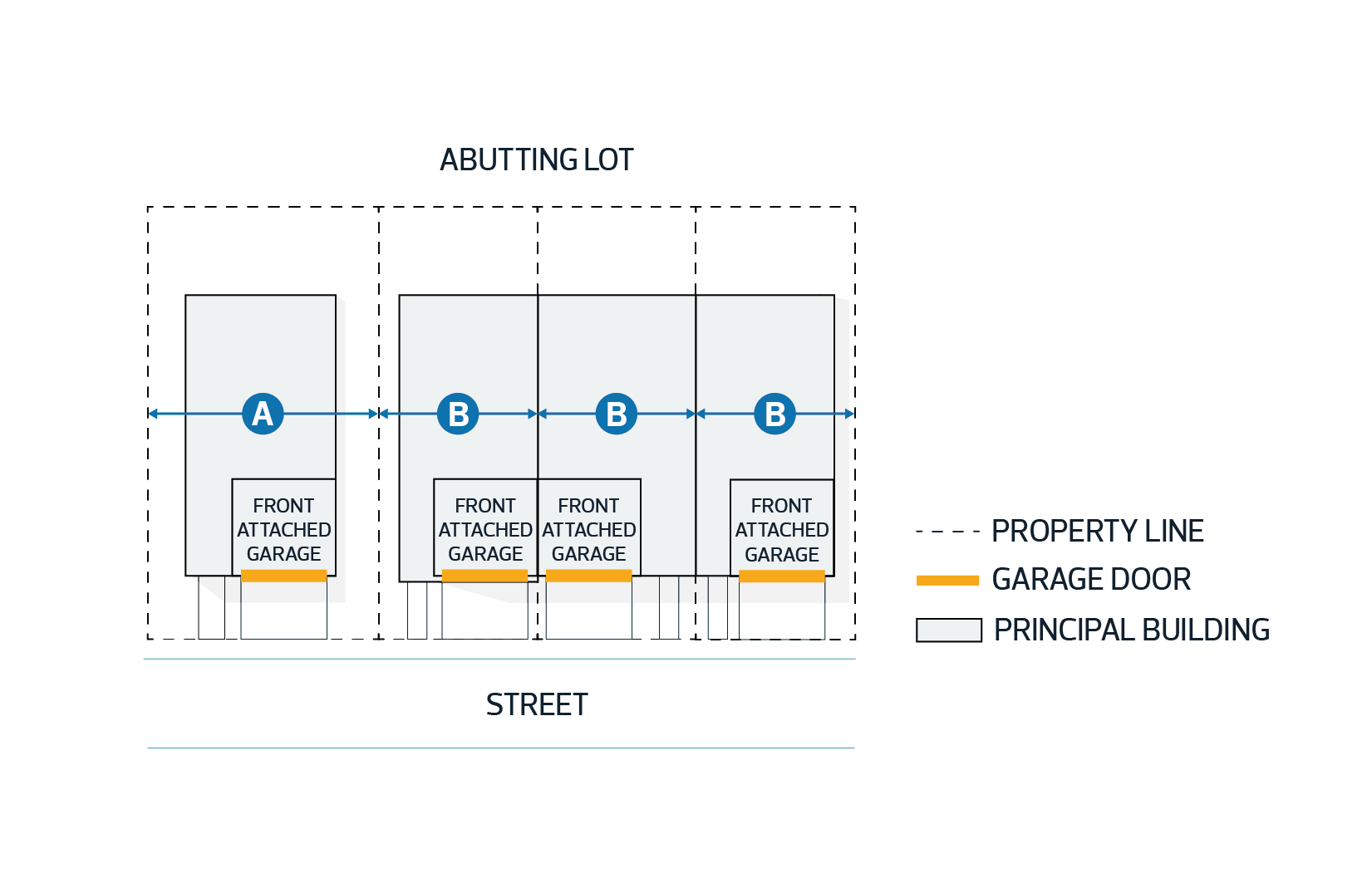
|
|||
| Site Width - Where the Site Abuts an Alley | |||
| 4.1.3. | Minimum Site Width | 7.0 m | C |
| Unless the following applies: | |||
| 4.1.4. | Minimum Site Width on a Local Road or for Reverse Housing a | 5.5 m | - |
| Lot Width - Where the Site Abuts an Alley | |||
| 4.1.5. | Minimum Lot Width for Row Housing internal Dwellings developed on separate Lots | 3.6 m | D |
| 4.1.6. | Minimum Lot Width for Semi-detached Housing or Row Housing end Dwellings developed on separate Lots | 4.8 m | E |
Diagram for Subsections 4.1.3, 4.1.4 and 4.1.5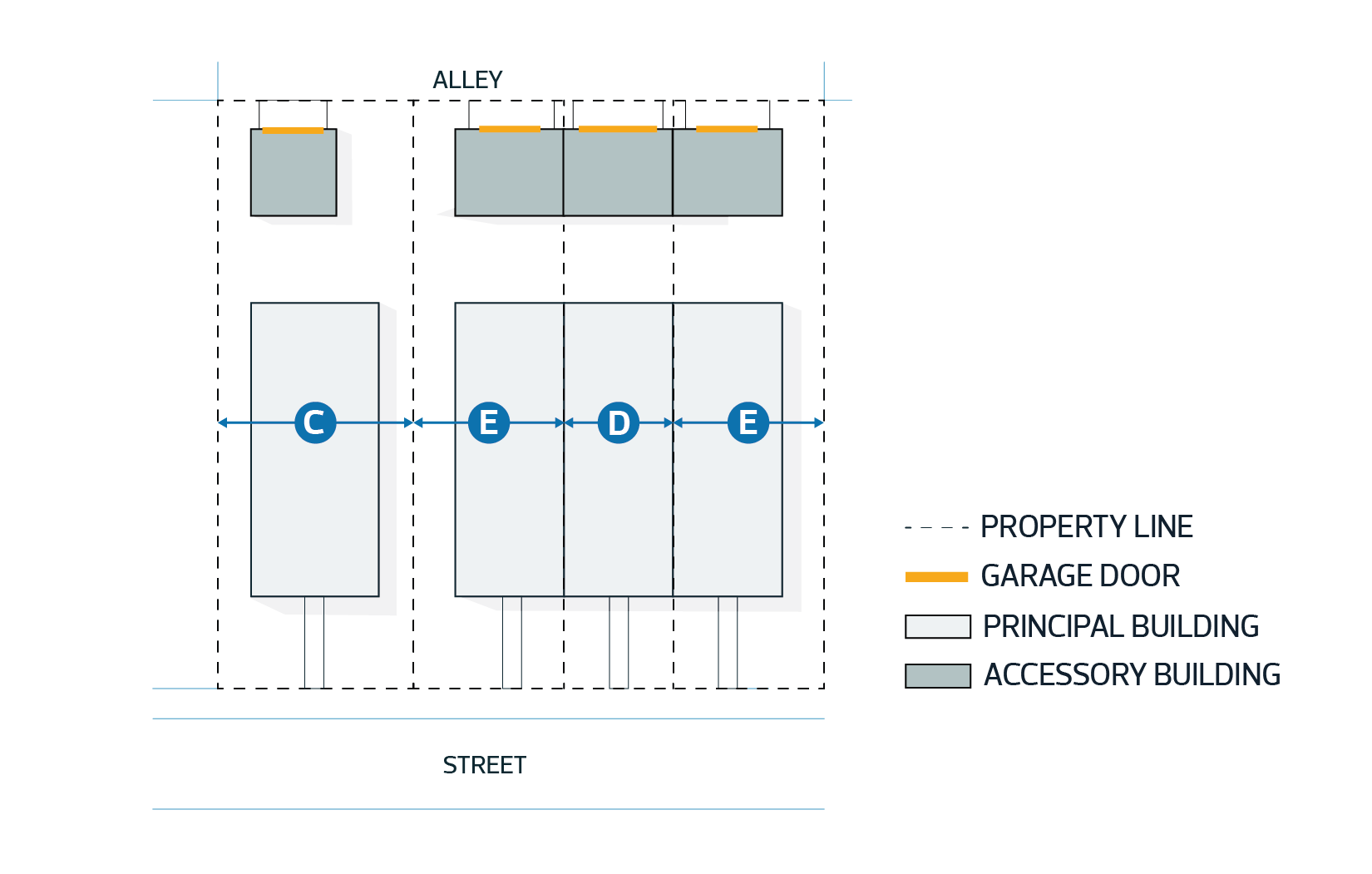
|
|||
| Height | |||
| 4.1.7. | Maximum Height | 12.0 m | - |
| Site Coverage | |||
| 4.1.8. | Maximum Site Coverage | 55% | - |
| Building Length | |||
| 4.1.9. | Maximum length of any building | 30.0 m | F |
Diagram for Subsection 4.1.8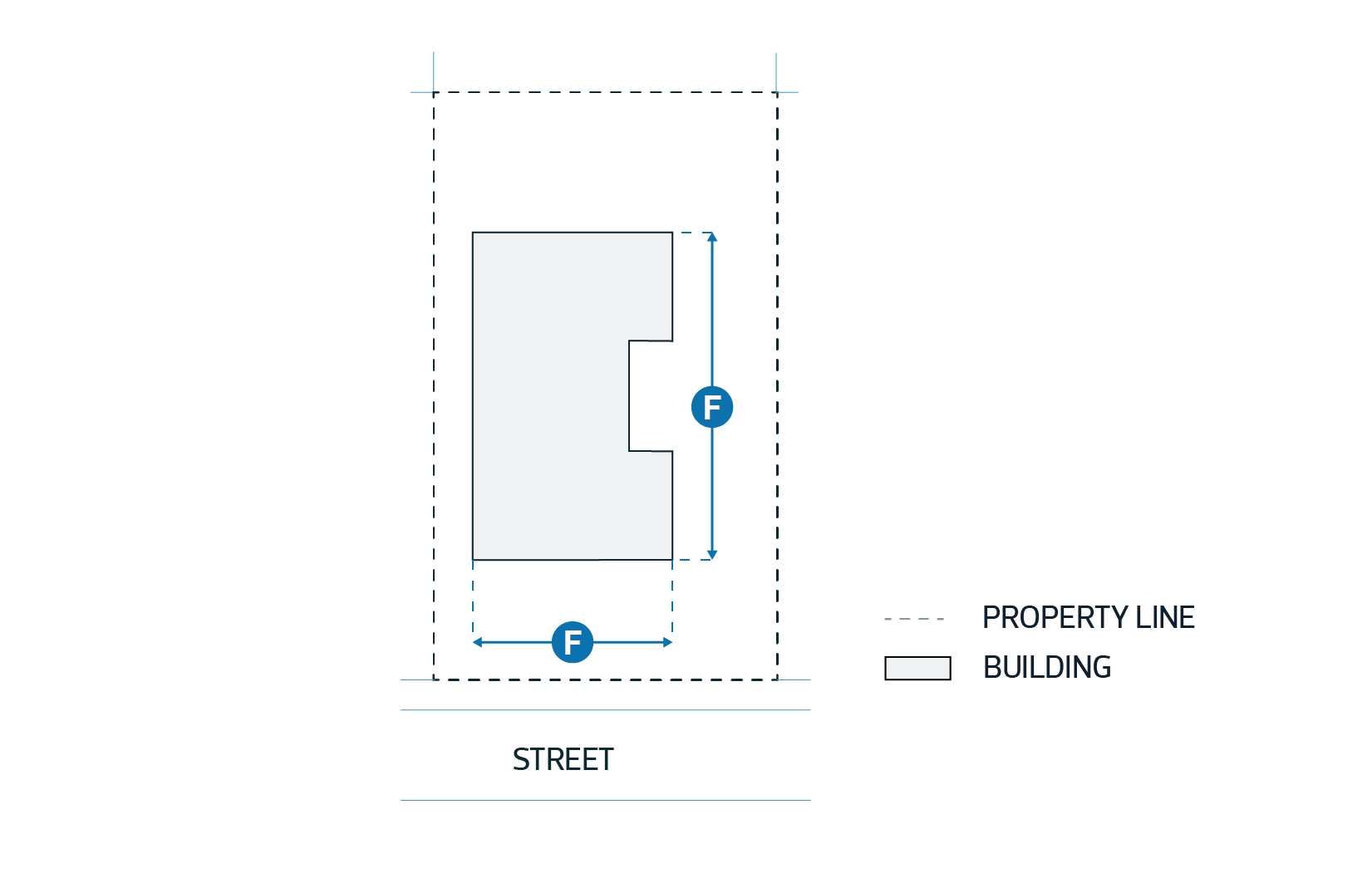
|
|||
| 4.2. | Setbacks must comply with Table 4.2: |
| Table 4.2. Setback Regulations | |||
|---|---|---|---|
| Subsection | Regulation | Value | Symbol |
| Front Setback | |||
| 4.2.1. | Minimum Front Setback | 4.5 m | A |
| Unless 1 or more of the following applies: | |||
| 4.2.2. | Minimum Front Setback where a Treed Boulevard is provided and vehicle access is from an Alley | 3.0 m | B |
| 4.2.3. | Minimum Front Setback where the development is for Reverse Housing | 3.0 m | C |
Diagram for Subsections 4.2.1, 4.2.2 and 4.2.3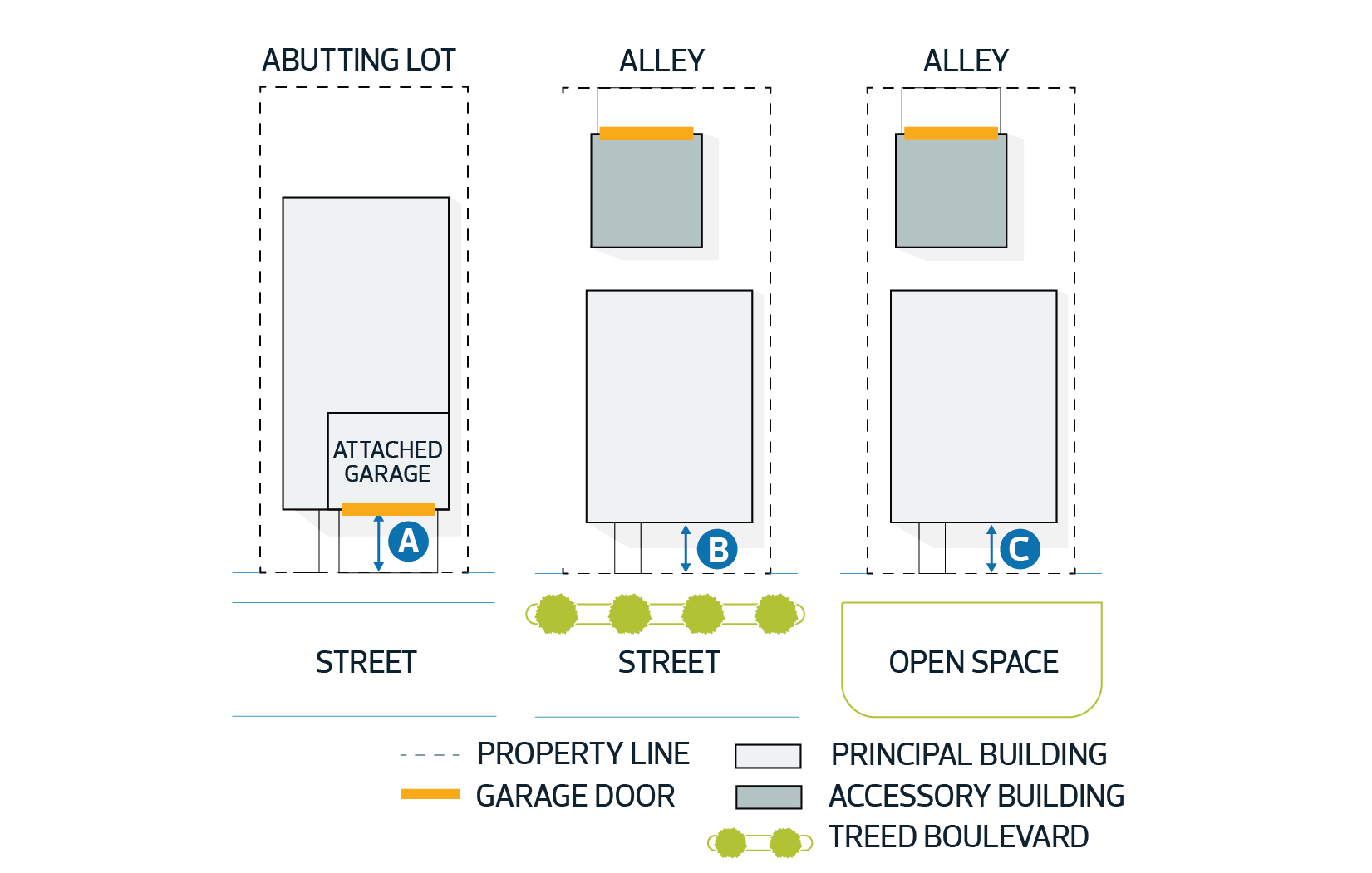
|
|||
| Rear Setback | |||
| 4.2.4. | Minimum Rear Setback | 6.0 m | D |
| Unless the following applies: | |||
| 4.2.5. | Minimum Rear Setback for a building with a rear attached Garage where the Site depth is less than or equal to 30.0 m | 1.2 m | E |
Diagram for Subsections 4.2.4 and 4.2.5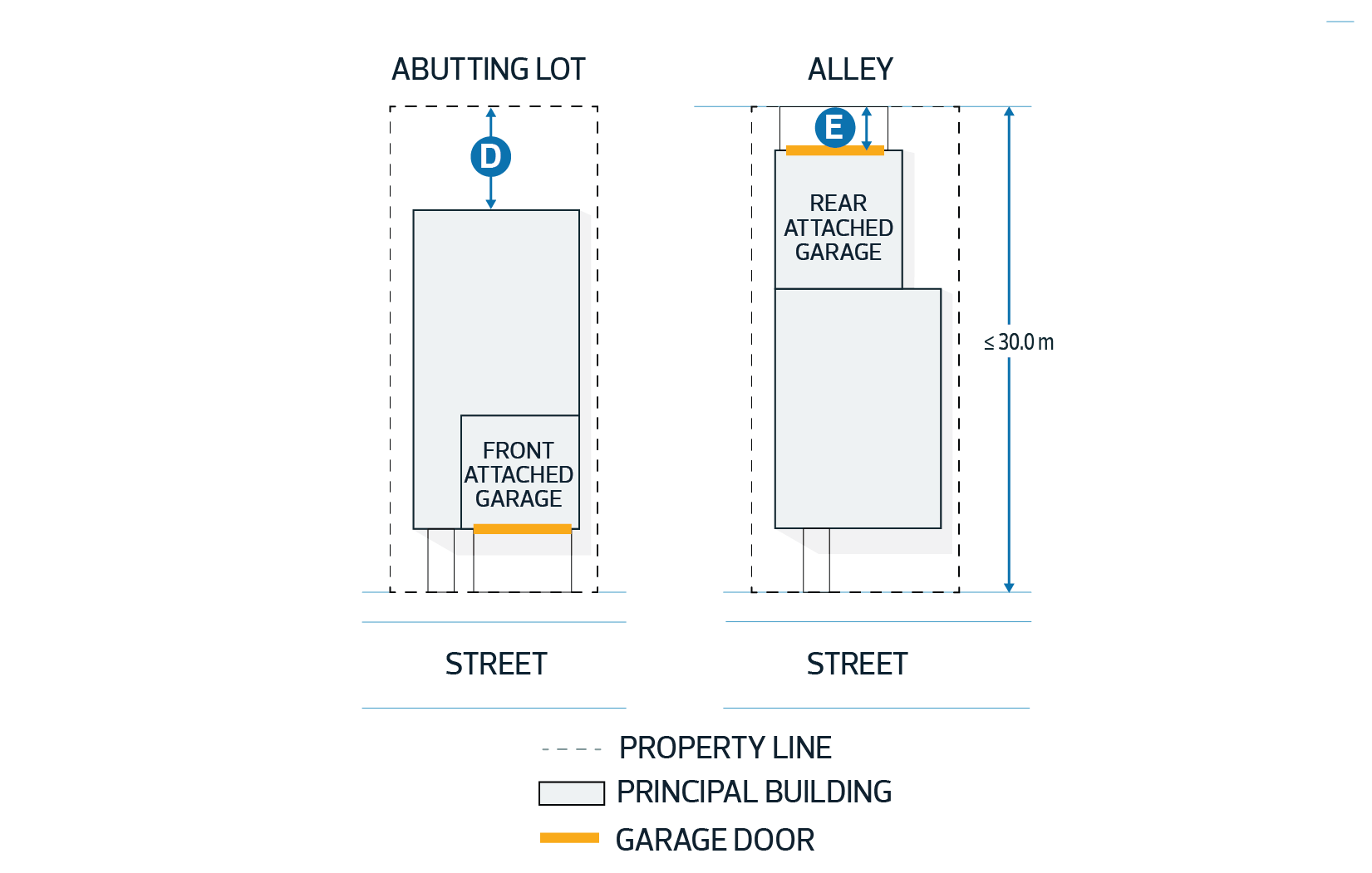
|
|||
| Interior Side Setback | |||
| 4.2.6. | Minimum Interior Side Setback | 1.2 m | G |
| 4.2.7. | Minimum Interior Side Setback for Zero Lot Line Development where the Abutting Interior Side Setback is 0 m | 1.5 m | H |
| 4.2.8. | Minimum Interior Side Setback for Reduced Setback Development where the Abutting Interior Side Setback is greater than or equal to 0.6 m and less than 1.2 m | 1.2 m | I |
Diagram for Subsections 4.2.6, 4.2.7, and 4.2.8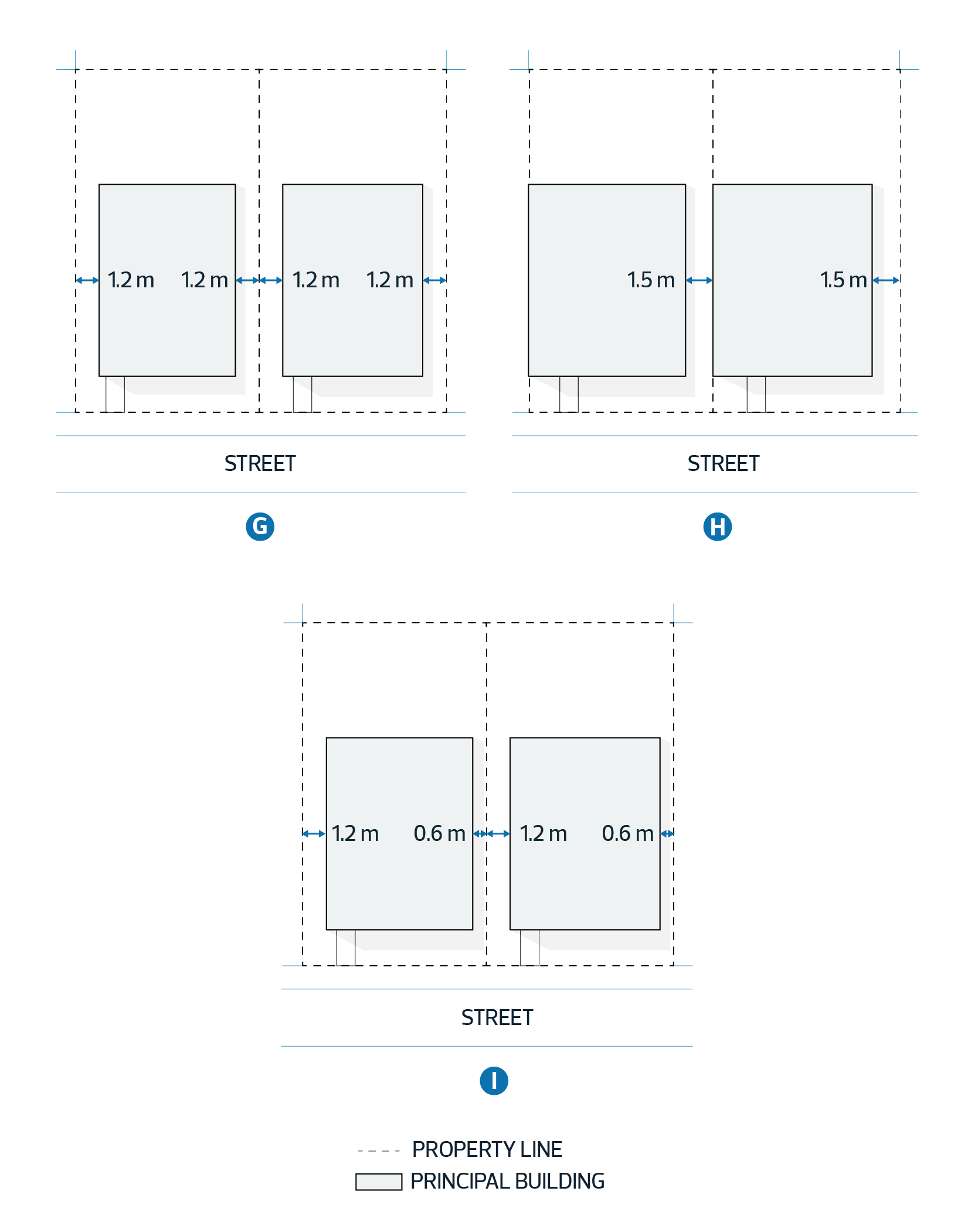
|
|||
| Unless the following applies: | |||
| 4.2.9. | Minimum Interior Side Setback when Row Housing or Multi-unit Housing faces an Interior or Flanking Side Lot Line | 1.5 m | J |
Diagram for Subsections 4.2.9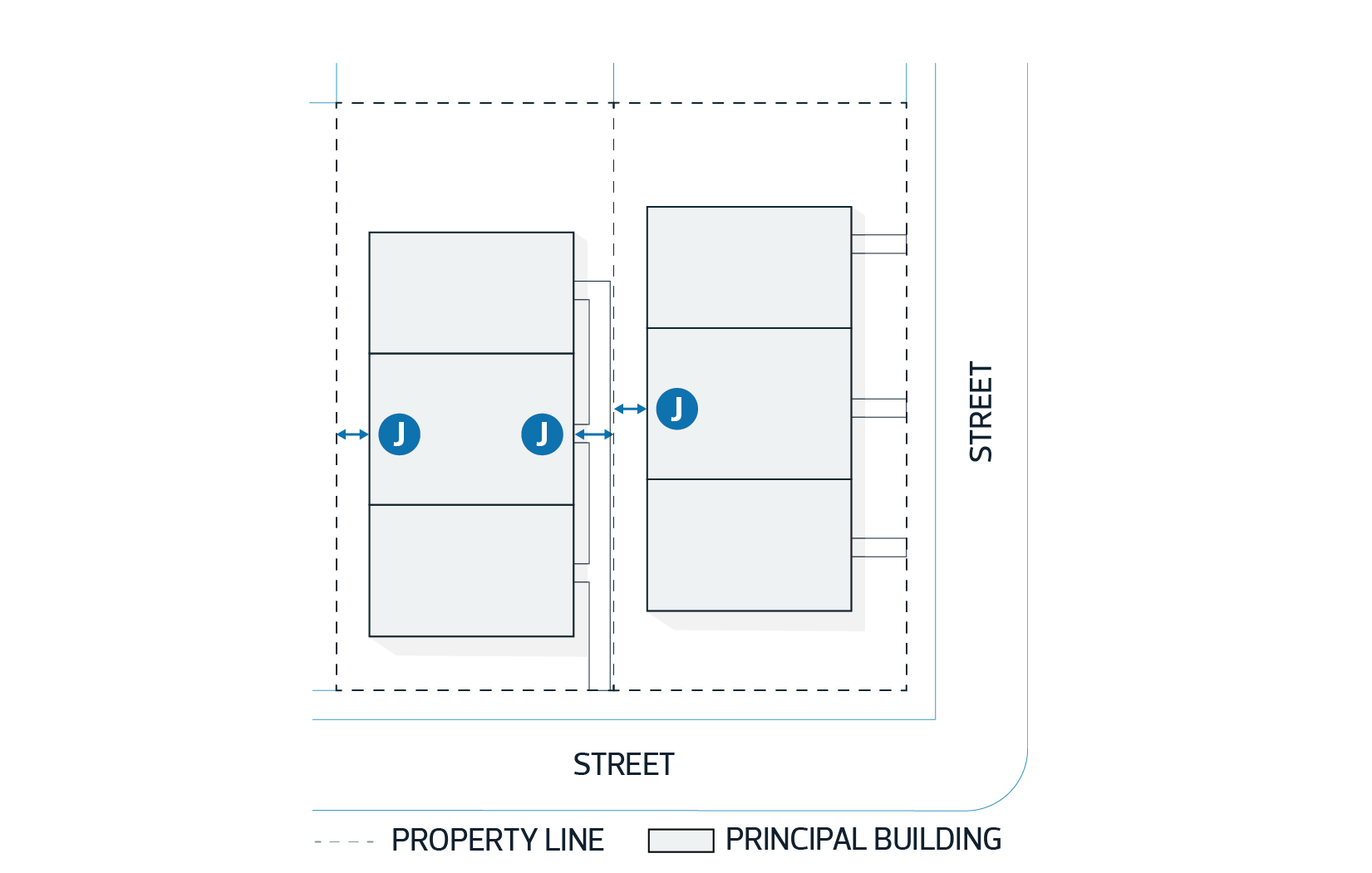
|
|||
| Flanking Side Setback | |||
| 4.2.10. | Minimum Flanking Side Setback | 2.0 m | K |
Diagram for Subsections 4.2.10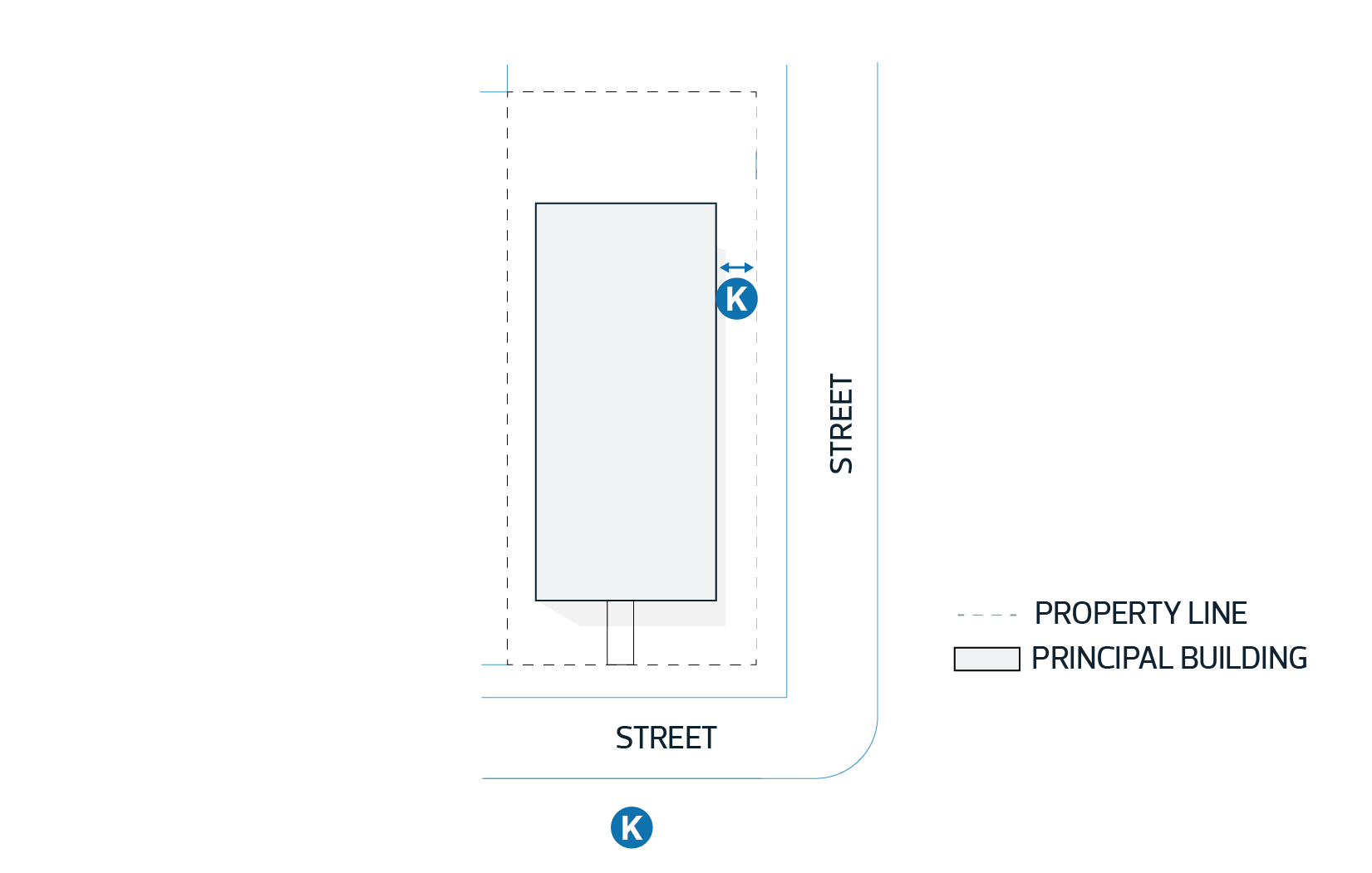
|
|||
| 4.3. | Driveway length must comply with Table 4.3: |
| Table 4.3. Driveway Length Regulations | |||
|---|---|---|---|
| Subsection | Regulation | Value | Symbol |
| 4.3.1. | Minimum Driveway length between a Garage door and the back of an existing or approved sidewalk at the time of the Development Permit application | 6.0 m | A |
| Unless the following applies: | |||
| 4.3.2. | Minimum Driveway length between a Garage door and the Front Lot Line or Flanking Side Lot Line, where there is no existing or approved sidewalk at the time of the Development Permit application | 5.5 m | - |
Diagram for Subsection 4.3.1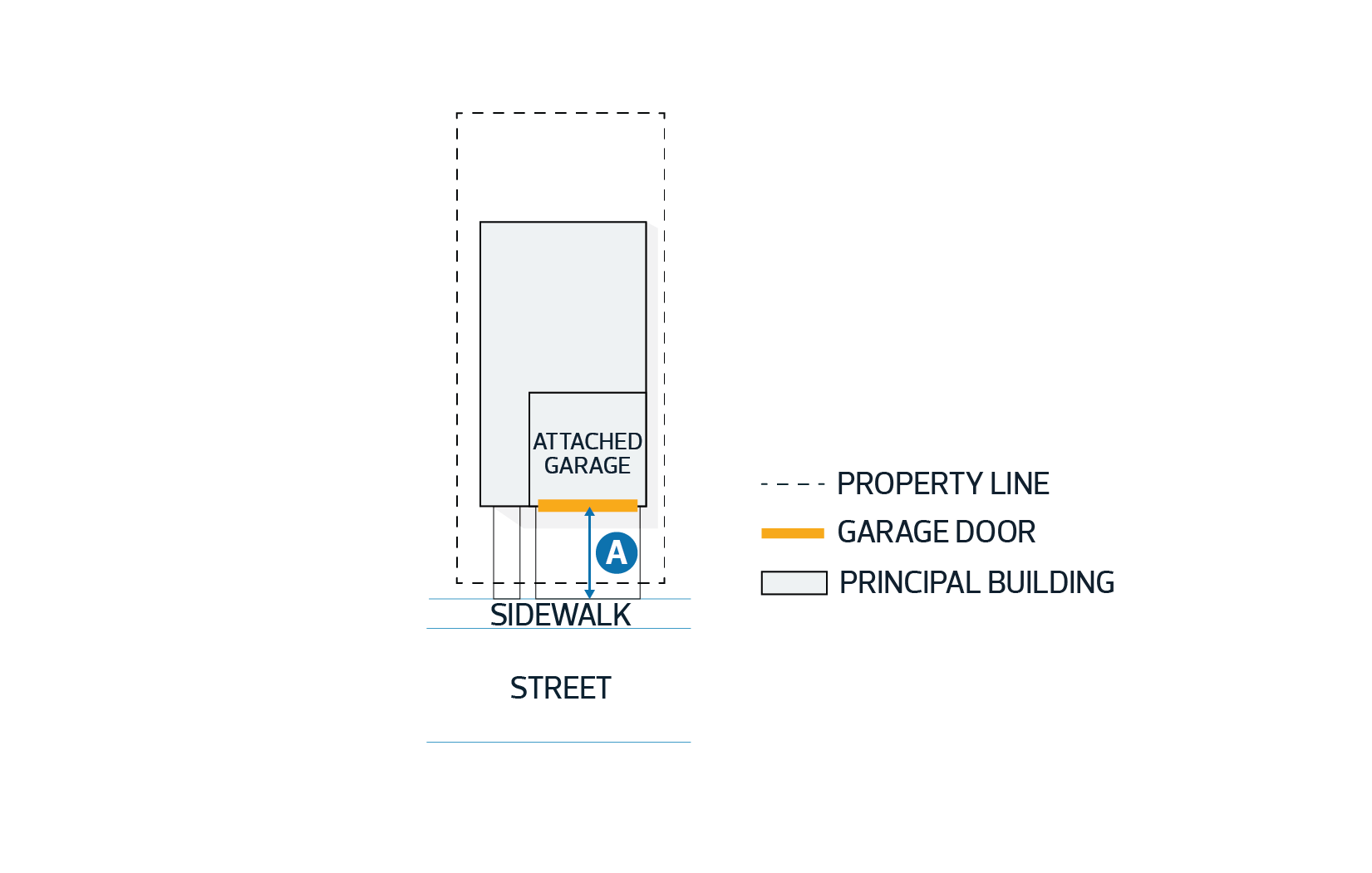
|
|||
Building Design Regulations |
||||||||
| 5.1. | For Multi-unit Housing, where a building wall: | |||||||
|
||||||||
Entrance Design Regulations |
||||||||
| 5.2. | All principal ground-oriented Dwellings and non-Residential Uses adjacent to a Front or Flanking Side Lot Line must have a main entrance door, porch, or landing facing either the Front or Flanking Side Lot Line, except: | |||||||
|
||||||||
| 5.3. | All Cluster Housing and Multi-unit Housing principal buildings adjacent to a Street must have at least 1 main entrance: | |||||||
|
||||||||
| 5.4. | Where Multi-unit Housing has a building wall length greater than 12.8 m fronts onto a Street with an existing or approved sidewalk, each Ground Floor Dwelling along that wall must each have an individual entrance with direct ground level access to a Street with an existing or approved sidewalk. | a | ||||||
| 5.5. | Sliding patio doors must not serve as the main entrance of a Dwelling. | |||||||
| 5.6. | Main entrances for Multi-unit Housing must incorporate weather protection features in the form of canopies, awnings, overhangs, vestibules, recessed entrances or other architectural elements to provide all-season weather protection to pedestrians and to enhance the visibility of the entrance. | |||||||
Parking and Access | ||||||||||||||||||||||||
| 6.1. | Where a Site Abuts an Alley at the Rear Lot Line, vehicle access must be from the Alley, except that: | |||||||||||||||||||||||
| ||||||||||||||||||||||||
| 6.2. | Where developed with front attached Garages, Row Housing and Zero Lot Line Development must not be accessed directly from a Collector Road or located directly across from a school or public park Site. | |||||||||||||||||||||||
| 6.3. | Surface Parking Lots must not be located between a principal building and a Street. | |||||||||||||||||||||||
Additional Regulations for Zero Lot Line Development and Reduced Setback Development | ||||||||||||||||||||||||
| 6.4. | Zero Lot Line Development is permitted where: | |||||||||||||||||||||||
| ||||||||||||||||||||||||
| 6.5. | Where provided, side entrances on Zero Lot Line Developments must not be developed more than 0.3 m above the finished ground surface. | |||||||||||||||||||||||
| 6.6. | Reduced Setback Development is permitted where: | |||||||||||||||||||||||
| ||||||||||||||||||||||||
| 6.7. | Fences are not permitted within the Interior Side Yard of a Reduced Setback Development. | |||||||||||||||||||||||
| ||||||||||||||||||||||||

